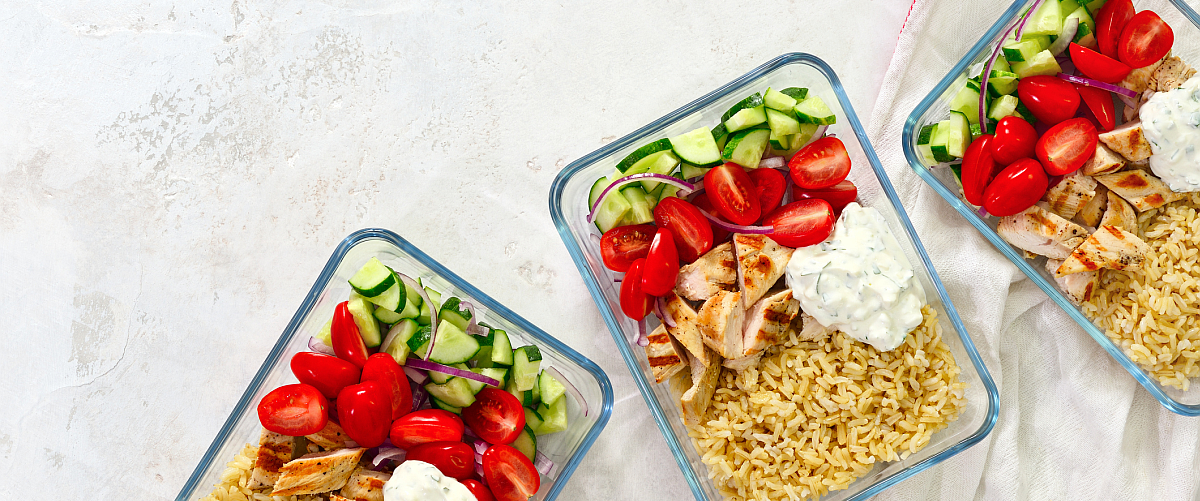We’ve all seen plenty of diet trends come and go, but one has stood the test of time: portion control. Understanding what a reasonable portion looks like is an important part of mindful eating.
But food comes in all sorts of packages, from single-serve cans to family-size boxes, and sometimes none at all. So you may still have questions: What’s the difference between a portion and a serving size? Do serving sizes differ from person to person? What size is right for me?
 Aramark registered dietitian Kelley Magowan is here to lay down the need-to-know facts about portion control, and her favorite at-a-glance method for measuring servings. With a firm grasp of the basics, you’ll recognize when more than the recommended amount of food is in front of you. You’ll also be able to decide what works best for you.
Aramark registered dietitian Kelley Magowan is here to lay down the need-to-know facts about portion control, and her favorite at-a-glance method for measuring servings. With a firm grasp of the basics, you’ll recognize when more than the recommended amount of food is in front of you. You’ll also be able to decide what works best for you.
Portions vs. Serving Sizes
First, a vocabulary lesson. According to the National Institutes of Health, a portion is the amount of food you choose for a meal or snack. Big or small, it’s what you decide to eat.
On the other hand, Kelley tells us, a serving size is a specific amount of food or drink—think a cup of yogurt or one slice of bread. It’s the manufacturer’s suggestion of how much of the product is usually consumed, and the basis for the nutritional information you see listed on the packaging.
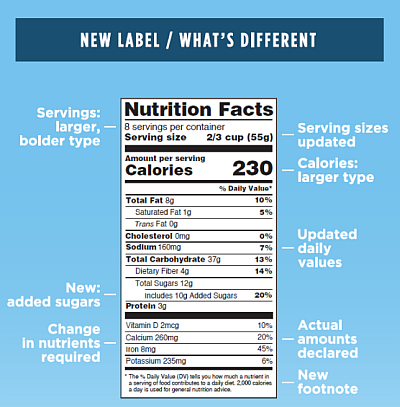 Sometimes a portion and a serving are one and the same, but not always. Also, you might assume that calories and other nutrients listed on a manufactured product are for one serving, but—to further complicate things—that’s not necessarily the case either. Which means it can be really challenging to know whether you’re eating or drinking a healthy portion.
Sometimes a portion and a serving are one and the same, but not always. Also, you might assume that calories and other nutrients listed on a manufactured product are for one serving, but—to further complicate things—that’s not necessarily the case either. Which means it can be really challenging to know whether you’re eating or drinking a healthy portion.
“It’s important to understand that many foods that come as a single portion actually contain multiple servings,” Kelley cautions. For example, you might consider a three-ounce bag of chips a single portion. But according to its Nutrition Facts label, that bag actually contains three servings of food.
Get to Know Your Nutrition Labels
In fact, the FDA recently set new rules to address this very phenomenon, requiring manufacturers to list serving sizes based on how much food and drink people typically eat at one time. (You’ll see these changes being rolled out by July 2020.)
“Package size influences how much people consume. For instance, a 20-ounce soda or 15-ounce can of soup would technically contain about two servings—but most people will finish it in one sitting,” Kelley explains. So now the calories and nutrients will be listed as one serving.
For other products that are all too easy to eat in one go, like a pint of ice cream, manufacturers must provide “dual column” labels that show the amount of calories and nutrients on both a per-serving and per-package basis.
Packaged goods aren’t the only thing that could trick you into eating more than you should. “When you’re being served by others, you lose control over what’s on your plate. And that food doesn’t come with a Nutrition Facts label,” Kelley warns. Restaurants often serve large portions that are enough for two people, or more. The same goes for self-serve buffets and dinner parties, where keeping track of serving sizes requires extra care.
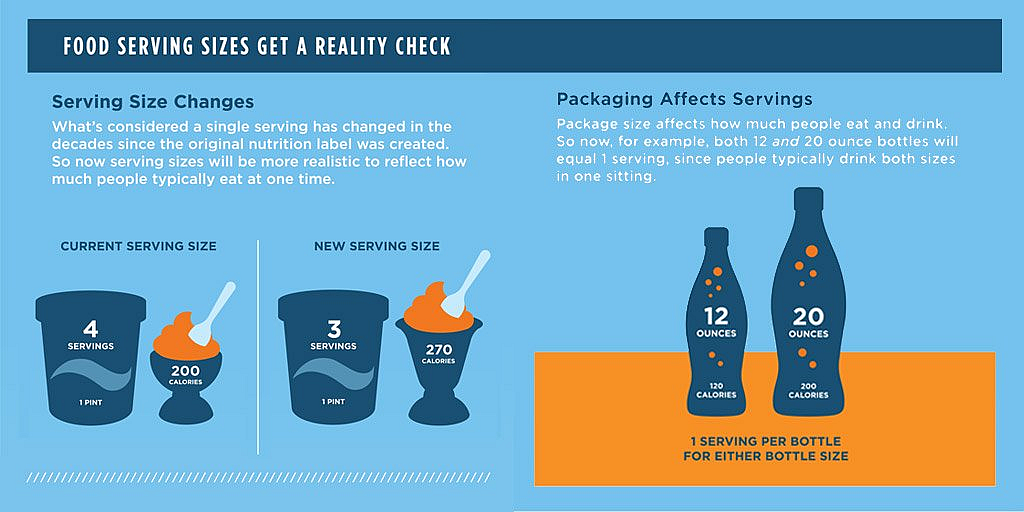
What and How Much?
You know to fill your plate with fresh produce, whole grains, and lean protein. But again, how much?
While everyone’s health history and nutritional needs are different, Kelley points to the national guidance from USDA’s MyPlate (table below).
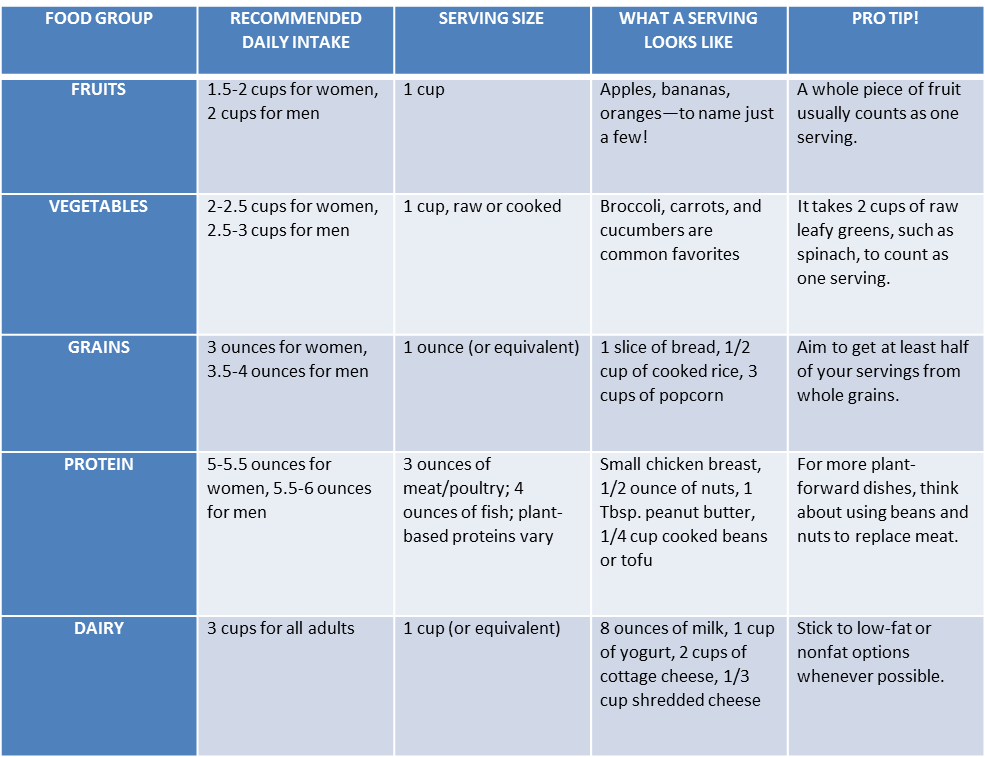
The plate itself can be just as important as what you put on it. “Many studies show that when we use larger bowls and plates, we tend to serve larger portions,” Kelley explains. “Picking one that’s about 10 inches in diameter is a great way to enjoy your food in more appropriate portions and set yourself up for long-term success.”
Ready, Set, Compare!
Chances are, you’re not going to have a scale or set of measuring cups on hand every time you eat. Even when you’re dishing up at home, it helps to be able to eyeball serving sizes.
One of the easiest ways, says Kelley, is to compare them with everyday objects. “This is one of my favorite nutrition hacks! It’s fun and it works.”
- Deck of Cards: 3 ounces of meat or poultry (you can go a little bigger for a 4-ounce serving of fish)
- Computer Mouse: ½ cup of vegetables, rice, or pasta
- Small Fist: 1 cup of cereal
- Four Dice: 1½ ounces of cheese
- Baseball: 1 small fruit
Other Portion-Trimming Tips
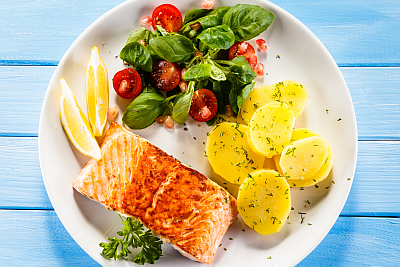 The point here is not only to eat mindfully, but to discover if smaller portions will still satisfy you. Your body can only use so much in one sitting, so eating smaller portions more often is better for maintaining a good metabolism (i.e., how your body converts food into energy).
The point here is not only to eat mindfully, but to discover if smaller portions will still satisfy you. Your body can only use so much in one sitting, so eating smaller portions more often is better for maintaining a good metabolism (i.e., how your body converts food into energy).
Kelley suggests the following strategies:
- Split a large salad or main dish with a friend.
- Put half of your meal in a to-go box and save it for later.
- Drink water before and with your meals (it helps fill you up).
- Put away the distractions and eat mindfully.
- Eat more fiber from fruits, veggies, and whole grains (also very filling!).
- Don’t eat directly from a large bag or box.
Remember, “it’s not always what you decide to eat, but how much,” says Kelley. “There is room for all foods in a well-balanced, healthy diet, but some should be eaten less often and in smaller portions than others.”
It takes practice to land on the right portion size for you, but turn to the tips and tricks above and you’ll be off to a great start. For recipes that break down nutrition information per serving, check out our new recipe section.
Note: Since everyone’s health history and nutritional needs are so different, please make sure that you talk with your doctor and a registered dietitian to get advice about the diet and exercise plan that‘s right for you.

